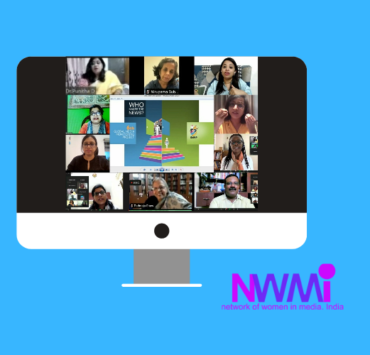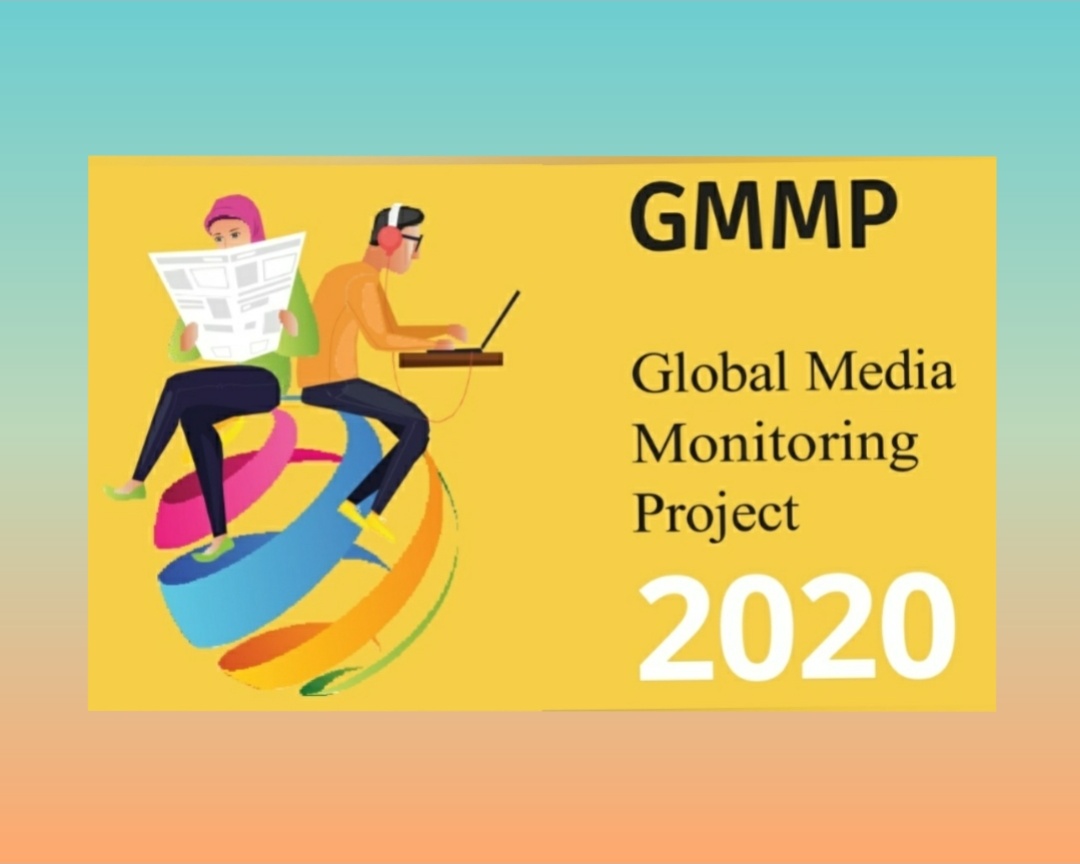
By Editors

The Global Media Monitoring Project (GMMP) is the largest and longest longitudinal study on gender in the world’s media. GMMP research has taken the pulse of selected indicators of gender in the news media across the world every five years since 1995, covering various aspects of the subject, including women’s presence (or absence) in news media in terms of both media content and media workers, and bias and/or stereotyping in selection of news subjects and sources.
You can read the Global Report of GMMP 2020 here, and the latest India Country Report here.
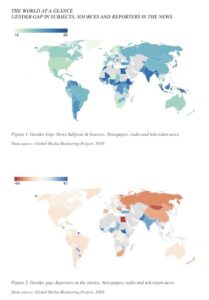 The GMMP provides a snapshot of the prevailing situation as revealed by structured scrutiny of news coverage on a single day across the world. Based on systematic media monitoring and data analysis, it enables information-based advocacy initiatives to improve gender equality in the media. The GMMP exercise is unique in involving participants ranging from grassroots community workers to university students and researchers to media practitioners; everyone takes part on a voluntary basis. The project was first conceived at the landmark international conference ‘Women Empowering Communication’ in Bangkok in 1994. Section J of the 1995 Beijing Platform for Action, on Women and Media, remains the touchstone for the GMMP, which focuses particularly on Strategic Objective J.2: “Promote a balanced and non-stereotyped portrayal of women in the media”.
The GMMP provides a snapshot of the prevailing situation as revealed by structured scrutiny of news coverage on a single day across the world. Based on systematic media monitoring and data analysis, it enables information-based advocacy initiatives to improve gender equality in the media. The GMMP exercise is unique in involving participants ranging from grassroots community workers to university students and researchers to media practitioners; everyone takes part on a voluntary basis. The project was first conceived at the landmark international conference ‘Women Empowering Communication’ in Bangkok in 1994. Section J of the 1995 Beijing Platform for Action, on Women and Media, remains the touchstone for the GMMP, which focuses particularly on Strategic Objective J.2: “Promote a balanced and non-stereotyped portrayal of women in the media”.
The fifth study in the series was conducted in 2015 by hundreds of volunteers in 114 countries around the world. The sixth and latest edition, GMMP 2020, was conducted under the shadow of the Covid-19 pandemic, with the original monitoring date having to be abandoned and almost all training, monitoring and interaction among participants necessarily done online.
 Nevertheless 116 countries, including India, participated in the exercise.
Nevertheless 116 countries, including India, participated in the exercise.
Global findings from 1995 onwards reveal that the apparent move towards better gender balance in the news media over the years is not borne out by systematic study and that the situation remains grim in much of the world in terms of:
- Women’s continued invisibility in news media
- Relative absence of women’s perspectives in news coverage
- Tendency to present women as stars/celebrities and “ordinary people”, rarely as figures of authority
- Under-representation of women as professionals and/or experts in news content
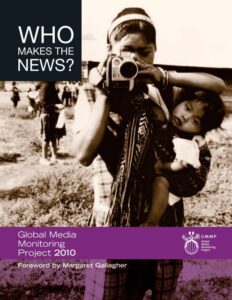
India has participated in the GMMP research since the beginning. However, no country report was prepared before 2010, when the Network of Women in Media (NWMI) took on the task of coordinating the process in India. Both network members and other volunteers have been participating in the exercise since then.
Some highlights from the India report
- The latest numbers from India show a decline both in women’s presence as news subjects as well as their presence as sources in the news media. In the big picture, the overall percentage of women in news as subjects and sources dropped sharply in 2020 – to 14% in 2020 across print, TV and radio, compared to 22% in 2010 and 21% in 2015. See graph above for more details.
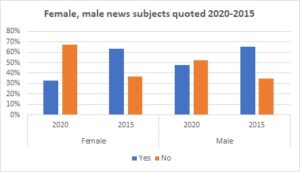
Here is another major finding. Women as news sources saw a sharp decline in 2020. Women news sources also continued to be drawn from occupations outside the core of the power structure, such as the entertainment sector and the social work/social activism sector. A full 60% (15 of 25) were from the celebrity, artist, actor, writer, singer et al category. Women’s function as spokespersons dropped to 8% in 2020 from 15% in 2015. Across all major news topics, including Gender and Related as well as Celebrity, etc., many more male reporters were deployed in 2020 than female reporters (Table 15). Fewer women reporters also meant that they were confined to coverage of fewer topics. Startlingly, female reporters no longer covered some topics at all. Only 14% of all the stories coded in 2020 focused on women. And those tend to be covered by female journalists.
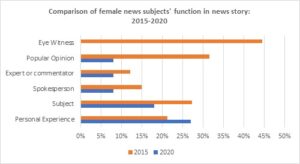
- This latest India report also takes note of the changes that have taken place as a result of the pandemic. To quote the report on this aspect, “The job losses and realignments that have unfolded as a result have had a significant impact on women journalists as well. Many have moved on – not always by choice – from employment in major media organisations to independent journalism, which is more precarious. The representation of women as employees in print media was always marginal; women were significantly better represented in television and radio. This continues to be the pattern now as well, although in general there are fewer journalists across all mediums since the pandemic.”
You can read all the GMMP reports (global, regional and national) across the decades here:
Related stories:
GMMP 2020 : 6th Global Media Monitoring Project show quantitative gains, qualitative losses
GMMP 2020 flags decline in women’s presence in Indian news media




